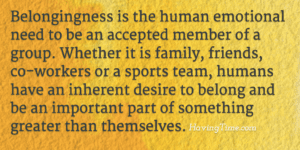When were your glory days? Pose this question and a congregation’s leaders will often tell stories of high attendance, engaged participation, and buildings that couldn’t hold it all. Glory-era memories are almost always recounted as blissful, happy times of pure goodness. However, parts of the story rarely get told—including how the seeds of decline may have been planted amidst the goodness.
planning
Why Congregations Exist

Meaning-making and belonging are core human needs. For parents and others who care about children’s future, another urgent need is to pass along our values to the young. While not every congregation excels at meeting all three of these needs, nearly every congregation tries. How can congregations respond to those needs both for their members and for those who are now looking elsewhere?
5 Practices for Coaxing Order out of Chaos

Chaos is a natural by-product of innovation. Innovation happens best in conditions of upheaval, disturbance, and dissonance. However, people expect their leaders to keep things calm, predictable, and orderly. How do we coax order out of chaos without squelching innovation?
Can A Church Hit Pause?

We’re all familiar with the universal symbol for “pause.” It’s those two parallel lines we tap when we want the music or the video to stop playing. But there are also times when individuals and organizations need to hit pause and take time to consider what comes next.
The Stewardship of Risk

Years ago a bright Yale student asked me how I would describe the difference between a church and any other charitable group. I gave the sort of answer I imagine many of us might give. I emphasized the church’s unique life-transforming mission and its special responsibility to transmit precious traditions across generations.
It was a good answer, but today I am afraid I’d have to add that of all nonprofits, congregations—and especially mainstream, relatively liberal ones—are among the most cautious and least willing to accept risk in order to fulfill their mission. We’re not alone. Many sleepy charities, government agencies, and old-line businesses also avoid risk. But where risk is concerned, many congregations fall into the slow group.
The Purple Church
Why do so many congregations brand themselves as “progressive” or “conservative”? Isn’t a more diverse, heterogenous congregational identity preferable?
Visioning is a Team Sport
Nearly every congregation has a mission statement. A good mission statement reminds leaders of who their congregation is and what it does in the world.

